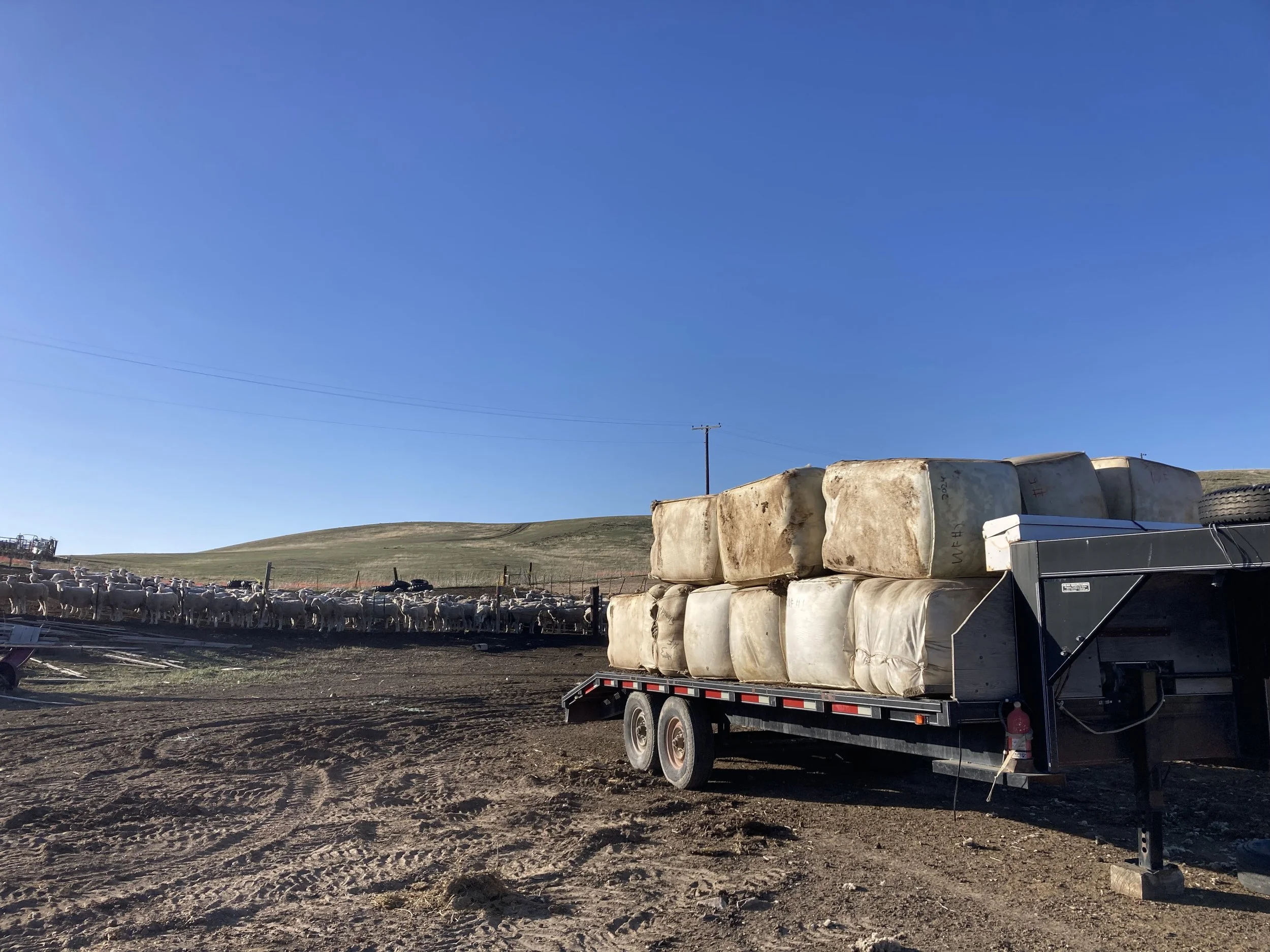Hauling Wool Down Easy Street
I decided to finally sell my wool, after storing it in my barn for three years.
I planned to haul it to Billings and bring back seed for my cover crop as a back-haul.
The wool buyer said the market is soft and doesn’t look like it will change.
Like a $3 loaf of bread has about 10 cents of wheat in it, a $150 wool sweater has about $2 of wool in it.
But fine white wool like mine brings enough to pay the shearing crew and I’m tired of working around a barn full of wool.
So I loaded 6 tons of wool on my 21-foot flatbed trailer.
Then I looked at the stress on the pickup and the trailer tires.
My double-axle trailer is built for heavier loads, but a 560-mile round trip with a lot of hills and dales offers a lot of opportunity for something to go wrong.
My mind flashed back to the last time I was overloaded with a trailer of lambs as I eased my way off the rimrocks and into downtown Billings.
Careening through five lanes of traffic and four intersections with smelly brakes had not registered on my fun meter.
Next, I recalled when I worked in Utah and we hauled a semi-load of cattle with leaky air brakes. That time, we faced down the plate glass window in a Chinese restaurant at a T in the road at the bottom of a steep hill.
We were going too fast to make the corner, but we had to try.
The double-decked trailer leaned wildly as my boss cranked the steering wheel, taking all of the lanes but managing to swing the truck around that corner.
I might have felt the wheels under my passenger seat come off the ground.
We delivered the cattle, found a new air brake hose and went to eat Chinese food.
We sat far from the plate-glass window.
So, before I headed for Billings with my wool, I unloaded 2000 pounds.
Then I milked the cow, sent my daughter off to 0-period and pointed the pickup southeast.
The load felt good, but I drove slowly anyway. I’d rather stretch the 12-hour trip out longer than have a blowout on the side of the road.
I dropped the heavy wool off, found my way to the seed plant, loaded three 1-ton totes of seed and turned my truck on to Easy Street, enjoying the scenery of Montana rangeland in springtime.
Nothing is prettier.
By 9 p.m., I was back to Great Falls, only a quick stop for fuel and 70 more miles to go.
As I pulled into the gas station, I checked my rearview mirror.
A trailer tire was rolling down five lanes.
In a split second, I was chasing the tire down five lanes.
When I caught up and grabbed the wheel, I realized the entire hub, not just the tire, was burning my hand.
Apparently, I missed a turn on Easy Street.
As the moon came up, I considered my options.
My choice was to unhook, leave the trailer at the gas station and come back tomorrow or ease my way home on three trailer wheels.
The remaining tire on the left side of the trailer squished under the weight of the seed.
A wise woman once told me that heat is the enemy of tires.
Friction causes heat.
Weight and speed create friction.
Knowing the odds were against me, I headed for home at 30 mph, reducing friction as much as I could.
Sixty miles and three hours later, I unhooked the three-wheeled trailer at my mechanic’s shop.
After 17.5 hours of driving, I was finally on Easy Street.
